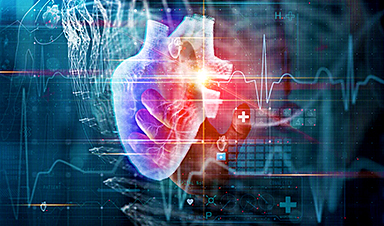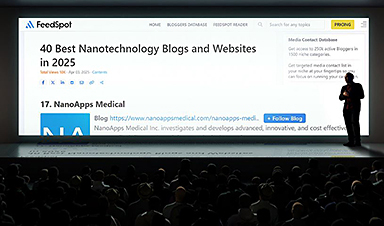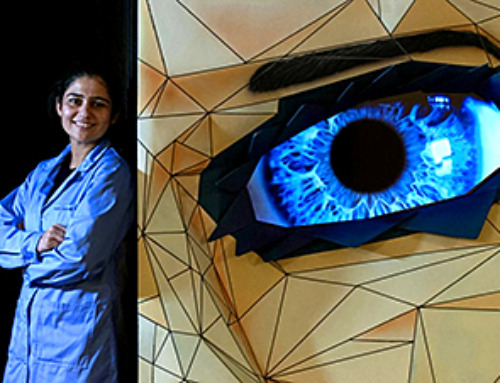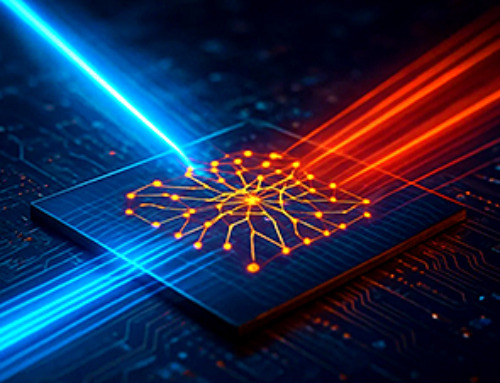An international team of scientists, including from the University of Cambridge, have launched a new research collaboration that will leverage the same technology behind ChatGPT to build an AI-powered tool for scientific discovery.
The team launched the initiative, called Polymathic AI earlier this week, alongside the publication of a series of related papers on the arXiv open access repository.
“This will completely change how people use AI and machine learning in science,” said Polymathic AI principal investigator Shirley Ho, a group leader at the Flatiron Institute’s Center for Computational Astrophysics in New York City.
The idea behind Polymathic AI “is similar to how it’s easier to learn a new language when you already know five languages,” said Ho.
Starting with a large, pre-trained model, known as a foundation model, can be both faster and more accurate than building a scientific model from scratch. That can be true even if the training data isn’t obviously relevant to the problem at hand.
“It’s been difficult to carry out academic research on full-scale foundation models due to the scale of computing power required,” said co-investigator Miles Cranmer, from Cambridge’s Department of Applied Mathematics and Theoretical Physics and Institute of Astronomy. “Our collaboration with Simons Foundation has provided us with unique resources to start prototyping these models for use in basic science, which researchers around the world will be able to build from—it’s exciting.”
“Polymathic AI can show us commonalities and connections between different fields that might have been missed,” said co-investigator Siavash Golkar, a guest researcher at the Flatiron Institute’s Center for Computational Astrophysics.
“In previous centuries, some of the most influential scientists were polymaths with a wide-ranging grasp of different fields. This allowed them to see connections that helped them get inspiration for their work. With each scientific domain becoming more and more specialized, it is increasingly challenging to stay at the forefront of multiple fields. I think this is a place where AI can help us by aggregating information from many disciplines.”
“Despite rapid progress of machine learning in recent years in various scientific fields, in almost all cases, machine learning solutions are developed for specific use cases and trained on some very specific data,” said co-investigator Francois Lanusse, a cosmologist at the Center national de la recherche scientifique (CNRS) in France.
“This creates boundaries both within and between disciplines, meaning that scientists using AI for their research do not benefit from information that may exist, but in a different format, or in a different field entirely.”
Polymathic AI’s project will learn using data from diverse sources across physics and astrophysics (and eventually fields such as chemistry and genomics, its creators say) and apply that multidisciplinary savvy to a wide range of scientific problems. The project will “connect many seemingly disparate subfields into something greater than the sum of their parts,” said project member Mariel Pettee, a postdoctoral researcher at Lawrence Berkeley National Laboratory.
“How far we can make these jumps between disciplines is unclear,” said Ho. “That’s what we want to do—to try and make it happen.”
ChatGPT has well-known limitations when it comes to accuracy (for instance, the chatbot says 2,023 times 1,234 is 2,497,582 rather than the correct answer of 2,496,382). Polymathic AI’s project will avoid many of those pitfalls, Ho said, by treating numbers as actual numbers, not just characters on the same level as letters and punctuation. The training data will also use real scientific datasets that capture the physics underlying the cosmos.
Transparency and openness are a big part of the project, Ho said. “We want to make everything public. We want to democratize AI for science in such a way that, in a few years, we’ll be able to serve a pre-trained model to the community that can help improve scientific analyses across a wide variety of problems and domains.”
More information: Michael McCabe et al, Multiple Physics Pretraining for Physical Surrogate Models, arXiv (2023). DOI: 10.48550/arxiv.2310.02994
Siavash Golkar et al, xVal: A Continuous Number Encoding for Large Language Models, arXiv (2023). DOI: 10.48550/arxiv.2310.02989
Francois Lanusse et al, AstroCLIP: Cross-Modal Pre-Training for Astronomical Foundation Models, arXiv (2023). DOI: 10.48550/arxiv.2310.03024
News
This Tiny Cellular Gate Could Be the Key to Curing Cancer – And Regrowing Hair
After more than five decades of mystery, scientists have finally unveiled the detailed structure and function of a long-theorized molecular machine in our mitochondria — the mitochondrial pyruvate carrier. This microscopic gatekeeper controls how [...]
Unlocking Vision’s Secrets: Researchers Reveal 3D Structure of Key Eye Protein
Researchers have uncovered the 3D structure of RBP3, a key protein in vision, revealing how it transports retinoids and fatty acids and how its dysfunction may lead to retinal diseases. Proteins play a critical [...]
5 Key Facts About Nanoplastics and How They Affect the Human Body
Nanoplastics are typically defined as plastic particles smaller than 1000 nanometers. These particles are increasingly being detected in human tissues: they can bypass biological barriers, accumulate in organs, and may influence health in ways [...]
Measles Is Back: Doctors Warn of Dangerous Surge Across the U.S.
Parents are encouraged to contact their pediatrician if their child has been exposed to measles or is showing symptoms. Pediatric infectious disease experts are emphasizing the critical importance of measles vaccination, as the highly [...]
AI at the Speed of Light: How Silicon Photonics Are Reinventing Hardware
A cutting-edge AI acceleration platform powered by light rather than electricity could revolutionize how AI is trained and deployed. Using photonic integrated circuits made from advanced III-V semiconductors, researchers have developed a system that vastly [...]
A Grain of Brain, 523 Million Synapses, Most Complicated Neuroscience Experiment Ever Attempted
A team of over 150 scientists has achieved what once seemed impossible: a complete wiring and activity map of a tiny section of a mammalian brain. This feat, part of the MICrONS Project, rivals [...]
The Secret “Radar” Bacteria Use To Outsmart Their Enemies
A chemical radar allows bacteria to sense and eliminate predators. Investigating how microorganisms communicate deepens our understanding of the complex ecological interactions that shape our environment is an area of key focus for the [...]
Psychologists explore ethical issues associated with human-AI relationships
It's becoming increasingly commonplace for people to develop intimate, long-term relationships with artificial intelligence (AI) technologies. At their extreme, people have "married" their AI companions in non-legally binding ceremonies, and at least two people [...]
When You Lose Weight, Where Does It Actually Go?
Most health professionals lack a clear understanding of how body fat is lost, often subscribing to misconceptions like fat converting to energy or muscle. The truth is, fat is actually broken down into carbon [...]
How Everyday Plastics Quietly Turn Into DNA-Damaging Nanoparticles
The same unique structure that makes plastic so versatile also makes it susceptible to breaking down into harmful micro- and nanoscale particles. The world is saturated with trillions of microscopic and nanoscopic plastic particles, some smaller [...]
AI Outperforms Physicians in Real-World Urgent Care Decisions, Study Finds
The study, conducted at the virtual urgent care clinic Cedars-Sinai Connect in LA, compared recommendations given in about 500 visits of adult patients with relatively common symptoms – respiratory, urinary, eye, vaginal and dental. [...]
Challenging the Big Bang: A Multi-Singularity Origin for the Universe
In a study published in the journal Classical and Quantum Gravity, Dr. Richard Lieu, a physics professor at The University of Alabama in Huntsville (UAH), which is a part of The University of Alabama System, suggests that [...]
New drug restores vision by regenerating retinal nerves
Vision is one of the most crucial human senses, yet over 300 million people worldwide are at risk of vision loss due to various retinal diseases. While recent advancements in retinal disease treatments have [...]
Shingles vaccine cuts dementia risk by 20%, new study shows
A shingles shot may do more than prevent rash — it could help shield the aging brain from dementia, according to a landmark study using real-world data from the UK. A routine vaccine could [...]
AI Predicts Sudden Cardiac Arrest Days Before It Strikes
AI can now predict deadly heart arrhythmias up to two weeks in advance, potentially transforming cardiac care. Artificial intelligence could play a key role in preventing many cases of sudden cardiac death, according to [...]
NanoApps Medical is a Top 20 Feedspot Nanotech Blog
There is an ocean of Nanotechnology news published every day. Feedspot saves us a lot of time and we recommend it. We have been using it since 2018. Feedspot is a freemium online RSS [...]




















